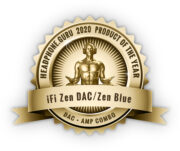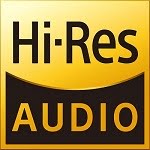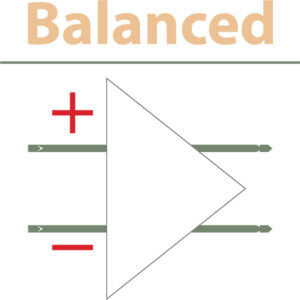Cute, compact and stylish
This superb hi-res USB DAC/headphone amp delivers a level of specification and performance that punches above its super-affordable price tag.
Compact enough to use as a USB DAC/amp on your work desk with your much-loved headphones.
Stylish enough to use in your home system as a USB DAC. Just add your favourite active speakers or amp.

DAC to the future
The ZEN DAC supports PCM and DXD to 32-bit/384kHz, DSD256 and MQA. DSD remains ‘bit-perfect’ thanks to the True Native Burr Brown chip design.
Our R&D maxes out the circuitry with bespoke, easy to install firmware to bring you the joyous musicality of hi-res. The ethereal music quality will leave you grinning ear to ear.
Brings balance (in more ways than one)
We’ve used a balanced design for the analogue stage – rare and not found at this price point. This makes it pretty special for the best sound quality. With super-low noise performance, it will remain quiet even in noisy situations such as yachts or RVs.
The ZEN DAC sports Balanced 4.4mm balanced outputs at both the front and back. On the front, there’s also the popular 6.3mm headphone socket. You get both headphone options.
DAC. Just add your favourite active speakers or amp.
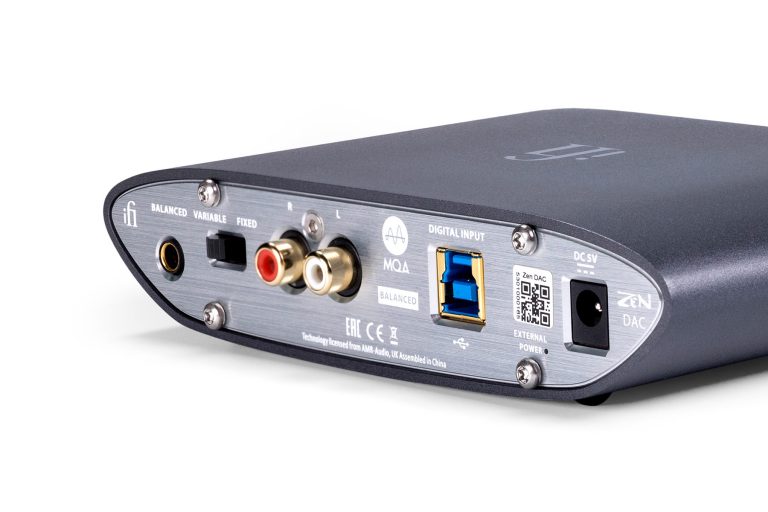
So flexible it almost does yoga
Switch effortlessly between ‘variable’ and ‘fixed’.
Set to ‘Variable,’ use the ZEN DAC as a pre-amp to feed a power amp or active speakers.
On ‘Fixed’ to bypass the volume control. Connect to an external pre-amp or integrated amp.
Power. Drive. Performance.
Our headphone amp has PowerMatch – switchable gain to perfectly match your headphones.
IEMs are high-sensitivity, Leave PowerMatch at its lower setting for hiss-free listening.
On/over-ear types with relatively low impedance require more oomph – press PowerMatch to increase the level of drive.
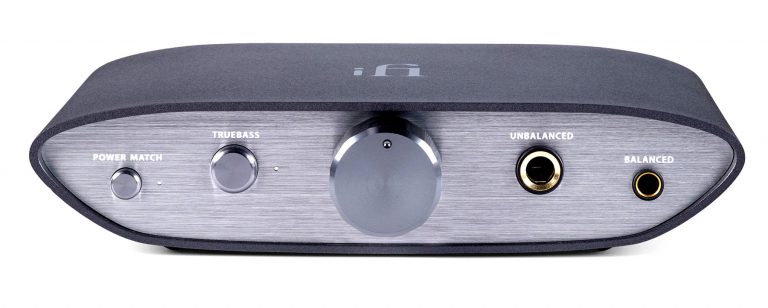
Ace of Bass.
The ZEN DAC boasts TrueBass. This proprietary tech is a switchable ‘bass boost’ operating in the analogue domain. There’s no DSP with iFi gear.
TrueBass enhances the bass but does not muddy the mid-range. Perfect for use with IEMs or open-back headphones which often lose out on bass.
So, in the words of the great Eric Clapton and from the film Back to the Future, Heaven is One Step Away.
Go find your ZEN.
So, what’s the difference?
Active speakers have an in-built power amplifier and just need a power cable (or battery) to operate. Passive speakers require an external power amplifier to operate.
In short, you need an amplifier for passive speakers, you don’t with active speakers.
This is a type of audio circuitry topology that uses individual left & right channels.
It is a superior method to the single-ended circuit approach. Balanced circuits reduce noise and crosstalk.
While single-ended is used by most at this price level, iFi is implementing balanced circuits across the Zen range which is quite a step-up.
Let’s talk headphone cables.
An unbalanced headphone cable has a left + and right + wire, for each respective side. The other, the third – wire is shared by both left & right channels. As this is shared, this gives rise to undesired coupling noise which is commonly referred to as ‘crosstalk.’
A balanced cable has the same left + and right +. But it has a separate left – and right -. With totally separate wiring ‘crosstalk’ is negligible.
Therefore, a balanced connection is the superior headphone wiring configuration.
DACs convert digital information, stored or streamed by computers, into music we can hear through speakers or headphones.
Every device that’s a source of digital sound has a built-in DAC (TVs, games consoles, CD players, phones, portable music players etc). Dedicated external DACs sound much better than standard DACs used in digital devices such as phones.
DSD is a very high-quality digital audio format that’s even better than CD quality. The higher the ‘DSD rate’ – DSD64, 128, 256, 512 and 1024 – the greater the amount of music information available, which means better sound quality.
Files can be remastered to higher file rates to improve sound quality. The pinnacle of this is DSD1024. Not many machines out there are capable of this feat.
Gain is the amount of increase in audio signal strength. Gain is often expressed in decibels (dB).
IEMs stands for In-Ear Monitors.
These fit inside your ear. You’ve been using them for years. You just called them something else.
You will also see these referred to as earphones, ear buds and CIEMs. CIEMs are Custom In-Ear Monitors – IEMs made specifically to fit your ear shape.
MP3 – this is the most popular format, every device in the world can use it.
DSD – Direct Stream Digital is a very high-quality audio format, better than CD quality. The higher the number (sample rate), the better the recording – DSD64, 128, 256, 512 and 1024.
PCM – Pulse Code Modulation is the most common format for CDs and DVDs.
DXD – Digital eXtreme Definition is a very high-quality PCM format. It was developed to edit hi-res (high quality) recordings recorded in DSD.
MQA is an award-winning British technology that delivers the sound of the original master recording. The master MQA file is fully authenticated and is small enough to stream or download. More here.
Zen emphasises rigorous self-control, meditation-practice, insight into the nature of things and the personal expression of this insight in daily life, especially for the benefit of others. Discover more here.





